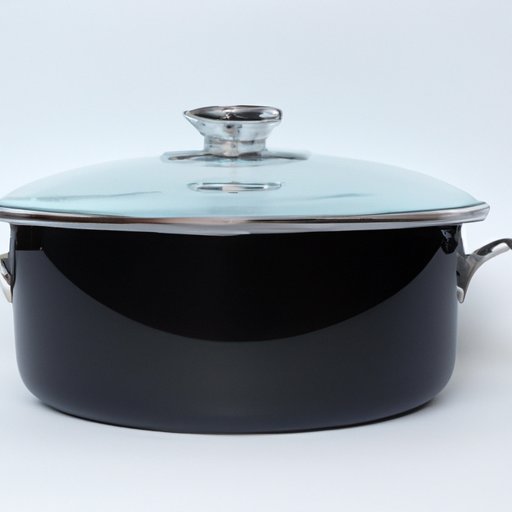
Introduction
Cookware is an indispensable component of any modern-day kitchen. However, we rarely think of the chemicals that our cooking vessels may leach into our food. One such substance that has garnered attention in recent years is perfluorooctanoic acid (PFOA), which is used in non-stick cookware. This article delves into the benefits and risks of PFOA-free cookware.
The Benefits of PFOA-Free: Why Choosing Non-Toxic Cookware Matters
PFOA-free cookware is the healthier choice when it comes to cookware. Most PFOA-containing cookware releases toxic fumes when heated, and these fumes can be harmful to our respiratory system. Additionally, PFOA has been linked to the development of cancer, thyroid disease, and other health issues. Therefore, choosing PFOA-free cookware is an investment in your health and the well-being of your loved ones.
Non-stick alternatives to PFOA-containing cookware that are PFOA-free include ceramic, cast iron, and stainless steel coatings. Ceramic coatings are a popular choice, as they are non-stick and easy to clean. Cast iron is another excellent choice as it is durable and non-stick when seasoned properly. Stainless steel is a good option for individuals who like to sear their food, as it is an excellent conductor of heat and can achieve the desired level of browning.
The Dangers of PFOA: Understanding the Risks of Non-Stick Coatings
The risks of PFOA-containing cookware are high. When heated, PFOA-containing cookware releases toxic fumes that can cause flu-like symptoms. PFOA also has an adverse impact on reproductive health. Studies have linked it to low birth weight, premature delivery, and even infertility. Ingesting PFOA can lead to liver and thyroid disease, obesity, and high cholesterol. Therefore, understanding the dangers of PFOA is essential to ensuring that we make informed decisions about the type of cookware we use.
Avoiding exposure to PFOA is critical. One way to do so is to choose PFOA-free cookware. Additionally, individuals should avoid using high heat to cook with non-stick cookware, as excessive heat can cause PFOA to break down and release toxic fumes.
The Rise of PFOA-Free Appliances: A Breakthrough in Health & Safety
As more is understood about the dangers of PFOA, appliance manufacturers are beginning to embrace PFOA-free options. A growing number of cookware and appliance manufacturers have switched to PFOA-free coatings, recognizing that customers are looking for safer, healthier options. Some popular brands with PFOA-free options include All-Clad, GreenPan, Lodge, and Le Creuset.
PFOA-free appliances offer the same performance benefits as traditional non-stick appliances, without the dangers associated with PFOA. As consumer demand for PFOA-free options increases, we’ll likely see more PFOA-free cookware and appliances on the market.
Cooking Without Harm: A Comprehensive Guide to PFOA-Free Cookware
There are several PFOA-free cookware options available on the market. Ceramic, cast iron, and stainless steel are all PFOA-free alternatives to traditional non-stick cookware. Ceramic cookware is stain-resistant, scratch-resistant, and non-stick, making it incredibly versatile. Cast iron cookware is durable, long-lasting, and has natural non-stick properties when seasoned correctly. Stainless steel cookware is an excellent conductor of heat and is ideal for searing meat and fish.
Each type of cookware has its pros and cons. Ceramic cookware is lightweight but can break easily. Cast iron cookware is heavy and difficult to clean, but can last a lifetime. Stainless steel cookware can be challenging to clean but is incredibly versatile. Knowing the pros and cons of each type of cookware can help you make an informed decision about which type of PFOA-free cookware is right for you.
Greening Your Kitchen: Switching to PFOA-Free Options
If you’re looking to make a switch to PFOA-free options, there are several steps you can take. Start by identifying which of your cookware and kitchen appliances contain PFOA. Check the labels of your non-stick cookware and replace them with PFOA-free options. Additionally, look for PFOA-free labels as you shop for new cookware or appliances. Recycling old cookware that contains PFOA is another excellent option for greening your kitchen.
Finally, look for sustainable options when choosing PFOA-free cookware. Ceramic cookware made from reclaimed or recycled materials is an excellent choice, as is cast iron cookware made with recycled iron. Additionally, buying high-quality cookware that lasts a lifetime is an excellent way to reduce waste and invest in sustainable kitchen practices.
PFOA-Free vs PFOA-Containing: What’s the Difference and Why It Matters
The main difference between PFOA-free and PFOA-containing cookware is the type of coating that’s used. PFOA-free cookware uses ceramic, cast iron, or stainless steel coatings, while non-stick cookware contains PFOA. The dangers associated with PFOA are the primary reason PFOA-free cookware is a healthier choice.
It’s essential to understand the difference between PFOA-free and PFOA-containing cookware when choosing new cookware or appliances. Check the labels of the products you’re interested in to ensure that they’re PFOA-free. With the increasing availability of PFOA-free options, it’s easy to make informed decisions about the type of cookware we use in our homes.
Conclusion
Choosing PFOA-free cookware is an investment in your health and the well-being of your loved ones. Understanding the benefits and risks of PFOA can help you make informed decisions when shopping for new cookware and appliances. By transitioning to PFOA-free options and making sustainable choices, you can green your kitchen and reduce your exposure to harmful chemicals.
For more resources on greening your kitchen and making PFOA-free choices, check out reputable websites and talk to your local kitchenware store.





